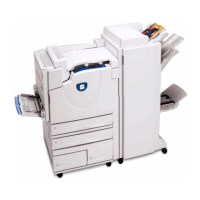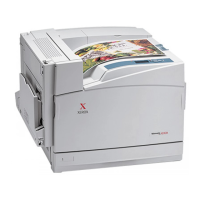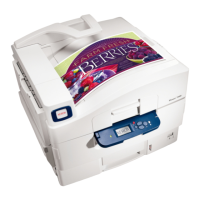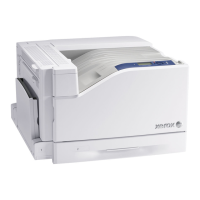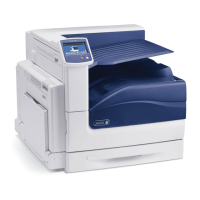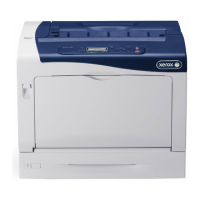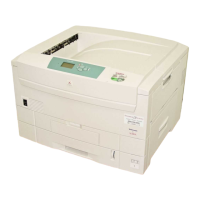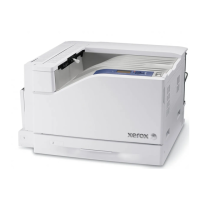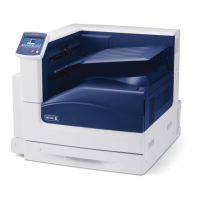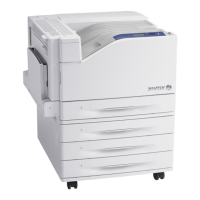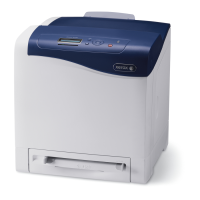2-16 Phaser 7750 Printer Service Manual
In the Write Black process for the Phaser 7750 printer, the four individual images, one
in each color, are transferred to the surface of the accumulator belt.The second
transfer roller puts a positive charge on the copy paper. Then the four-color image is
transferred to the sheet of paper in one pass. The positive charge attracts the negative
toner particles from the accumulator belt to the copy paper.
The image data is processed through the image processor board and is then routed to
the engine control board. On the image processor board, the process of screen
generation is conducted. In this process, the incoming image data is arranged in a
screen pattern before being sent to the ROS (Laser).
The engine control board is the ROS driver board. In other words, it is the last
location in the imaging path before the image data becomes optical information in the
form of modulated laser beams.
In the case of the Phaser 7750 printer, the engine control board sequentially passes
data that comprises the 4 different color planes to the Laser Diodes in the ROS.
The color planes are digital at this time, that is, they are a stream of 1’s and 0’s. The
digital information is applied to the ROS control circuit to turn the laser diodes on and
off. (A 0 turns the laser on and a 1 turns it off.) Using this technique, the digital levels
that make up the image data are modulated onto the laser beams.
As each of the four laser diodes scans the surface of the drum (in the YMCK
sequence), the image data is reflected and collimated within the ROS and is finally
reflected out to each imaging unit where the charged photoreceptor is exposed by the
laser. As the laser beam scans across the photoreceptor, a latent image is created on
the surface of the drum. As the imaging unit turns, it acquires the latent image from
the ROS, and toner from the developer housing.
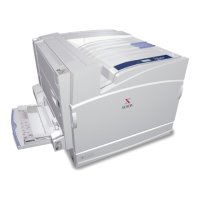
